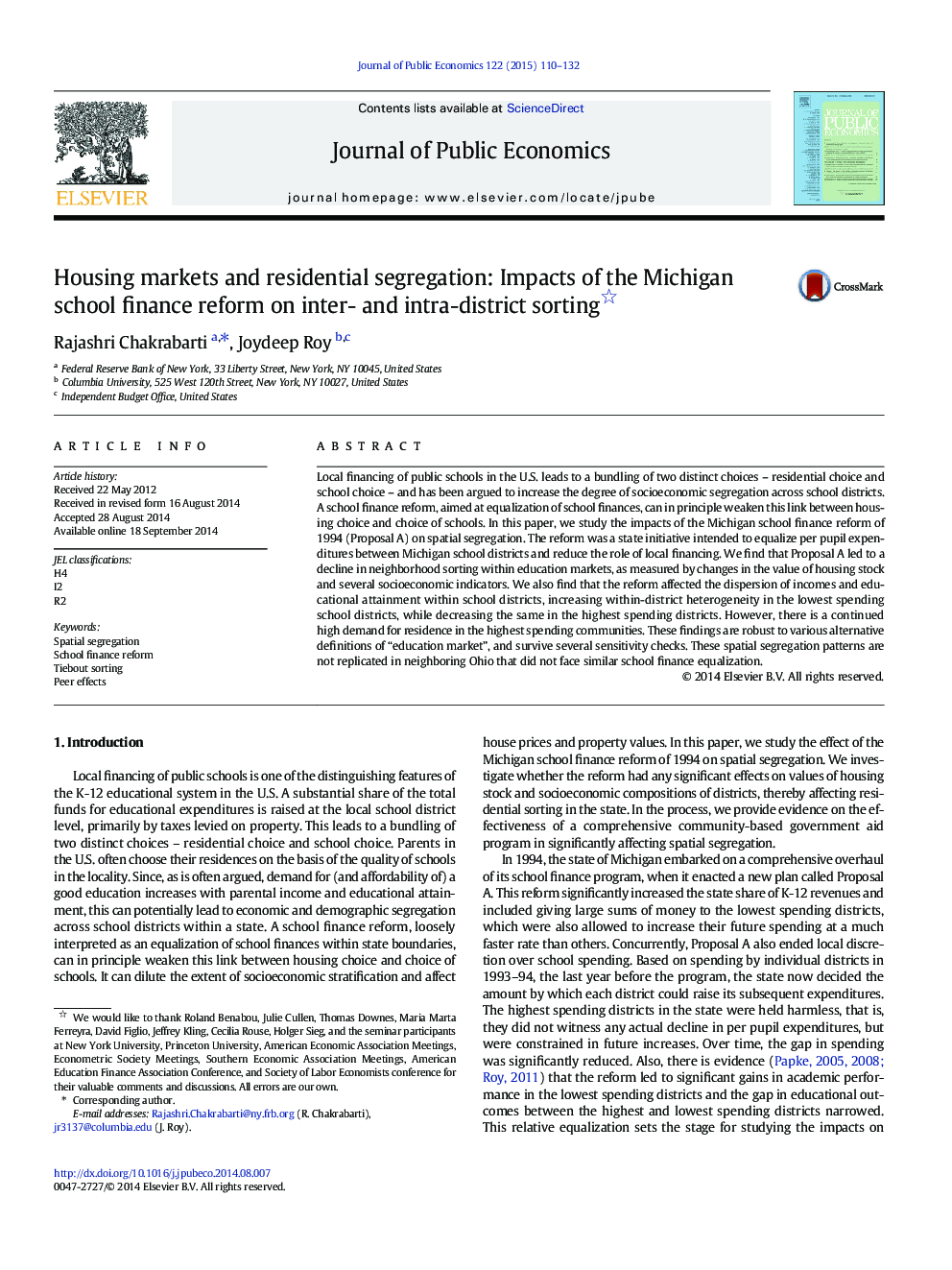| Article ID | Journal | Published Year | Pages | File Type |
|---|---|---|---|---|
| 7370092 | Journal of Public Economics | 2015 | 23 Pages |
Abstract
Local financing of public schools in the U.S. leads to a bundling of two distinct choices - residential choice and school choice - and has been argued to increase the degree of socioeconomic segregation across school districts. A school finance reform, aimed at equalization of school finances, can in principle weaken this link between housing choice and choice of schools. In this paper, we study the impacts of the Michigan school finance reform of 1994 (Proposal A) on spatial segregation. The reform was a state initiative intended to equalize per pupil expenditures between Michigan school districts and reduce the role of local financing. We find that Proposal A led to a decline in neighborhood sorting within education markets, as measured by changes in the value of housing stock and several socioeconomic indicators. We also find that the reform affected the dispersion of incomes and educational attainment within school districts, increasing within-district heterogeneity in the lowest spending school districts, while decreasing the same in the highest spending districts. However, there is a continued high demand for residence in the highest spending communities. These findings are robust to various alternative definitions of “education market”, and survive several sensitivity checks. These spatial segregation patterns are not replicated in neighboring Ohio that did not face similar school finance equalization.
Keywords
Related Topics
Social Sciences and Humanities
Economics, Econometrics and Finance
Economics and Econometrics
Authors
Rajashri Chakrabarti, Joydeep Roy,
